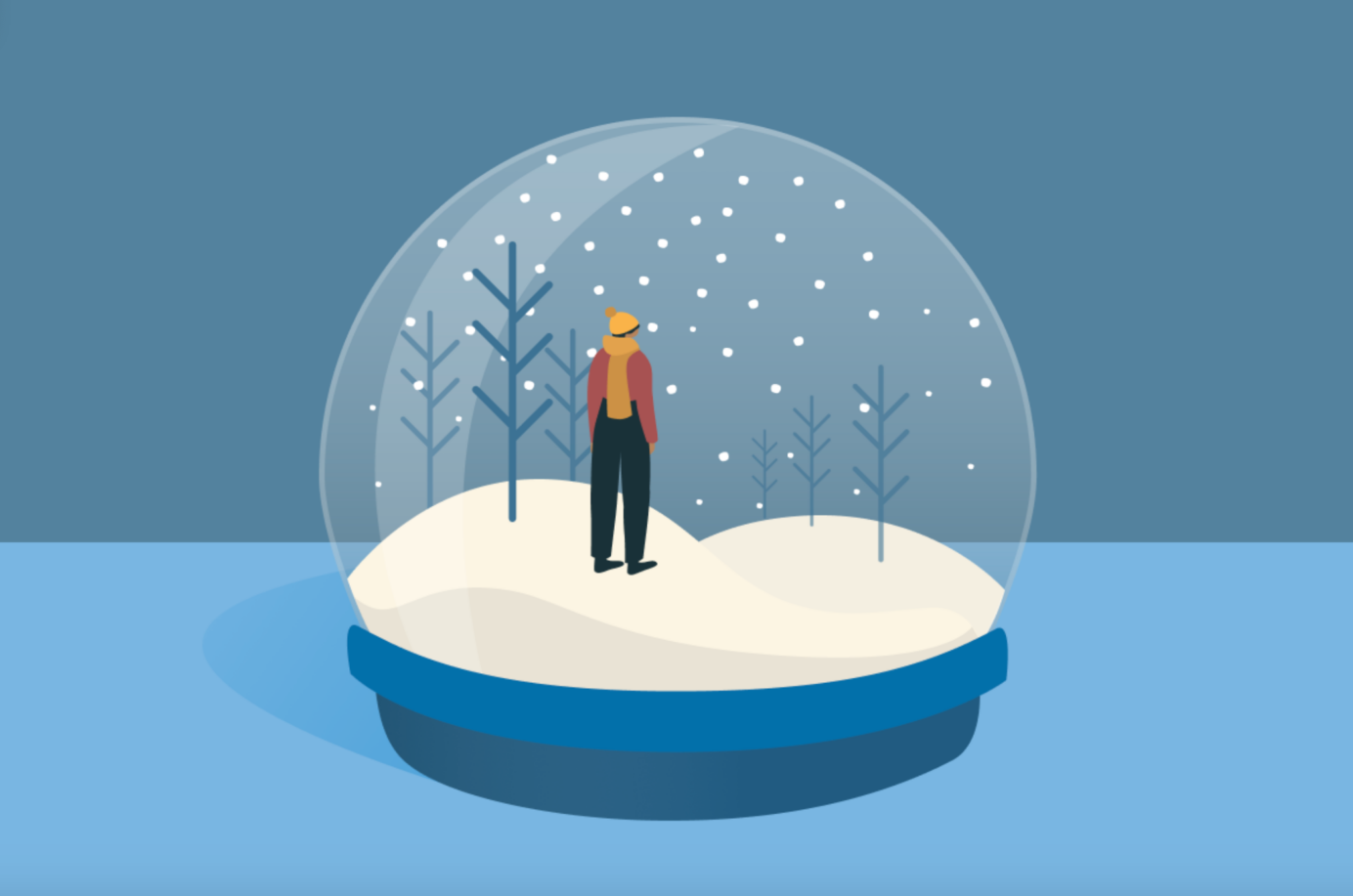Ways to Whisk the Winter Blues Away

by Hannah Lee ’21
As the temperature drops and nightfall approaches faster, many people find themselves dealing with worsened mental health while also struggling to find the motivation to complete everyday tasks. There is indeed a scientific reason for this phenomenon.
Seasonal affective disorder, also known as SAD, is a type of depression which typically occurs at the beginning of fall and continues on throughout the winter months. As the season changes and the amount of sunlight decreases, our circadian rhythm (the body’s natural internal clock) is interrupted and melatonin levels are offset. Both of these play a crucial role in our sleep patterns and because sleep is an important factor in regulating our emotions the interruption can lead to feelings of depression or moodiness. Reduced sunlight is also capable of decreasing serotonin levels, the neurotransmitter that regulates feelings of well-being.
Some ways the impact of the season’s change present themselves are loss of interest in hobbies, low energy and sluggishness throughout the day, agitation, difficulty focusing, and feelings of depression and hopelessness. Although millions of Americans suffer from SAD, many go about their everyday lives undiagnosed. Of course not everyone who experiences these winter blues actually has SAD, but the sentiment of treating and taking care of these symptoms are the same.
That being said, this time of year is obviously already difficult enough on its own. So what about when it’s combined with a worldwide pandemic? These additional feelings of helplessness and anxiety paired with limited social interactions will most likely make SAD symptoms extra tough to curb. Here are some small tips and ways to ensure you are taking care of your physical and mental health this winter.
1. Invest in a light therapy box
Light therapy boxes mimic natural sunlight to increase serotonin and energy in the body. All you have to do is turn it on and sit in front for about 20 to 30 minutes (note that they are most effective when within the first hour or so of waking up). If you have specific health conditions like bipolar disorder or lupus it is recommended to consult your doctor about buying one before doing so to prevent complications. Also make sure to purchase one that is UV free as UV rays can be harmful to the skin. These lamps can cost as little as $20 to as much as $150 depending on the size and quality.
2. Take Vitamin D pills or gummies
Vitamin D is the vitamin our bodies produce when we are exposed to UV light. Since we are indoors most of the time during winter (due to harsh weather and now quarantine) our bodies do not synthesize enough vitamin D from the sun’s rays. Vitamin D deficiencies are linked to fatigue and mood changes; therefore, it’s important to make up for this depletion by getting sufficient amounts elsewhere. Vitamin D supplements can be found at most local grocery stores and health and wellness stores.
3. Use dawn simulators
Waking up to a pitch black sky can often be an unmotivating start to the day. Similar to light therapy, dawn simulators use imitation of sunlight rays to treat SAD symptoms. However dawn simulators in particular are a type of alarm clock that gradually increase the amount of artificial sunlight so people can wake up more naturally and feel more at peace in the morning. These clocks range from $30 to $130.
4. Aromatherapy
Essential oils carry immense healing, anti-inflammatory, and stress relieving properties. One can choose to either apply it to the skin or to diffuse them into the air. Lavender, bergamot, clary sage, and orange/lemon are popular for SAD treatment. Lavender and bergamot are good for treating depression specifically, clary sage is used to calm those suffering from anxiety and insomnia, and orange and lemon can help one feel more alert if they are experiencing drowsiness.
5. Sit in the sun!
If you do not have the budget or means to afford these substitutions for sunlight, your best bet is going straight to the source. Bundle up and go on walks or even just sit outside for 15 to 30 minutes to soak in some sunlight. Your body and mind are in desperate need for fresh air and natural light after days in isolation surrounded by technology.
Although these are not immediate and guaranteed cures, they are small steps you can take to help your body and mind to endure the incoming months. Keep in mind that if your symptoms continue to intensify it’s completely acceptable to reach out for help and get a doctor consultation for further medication and treatment.